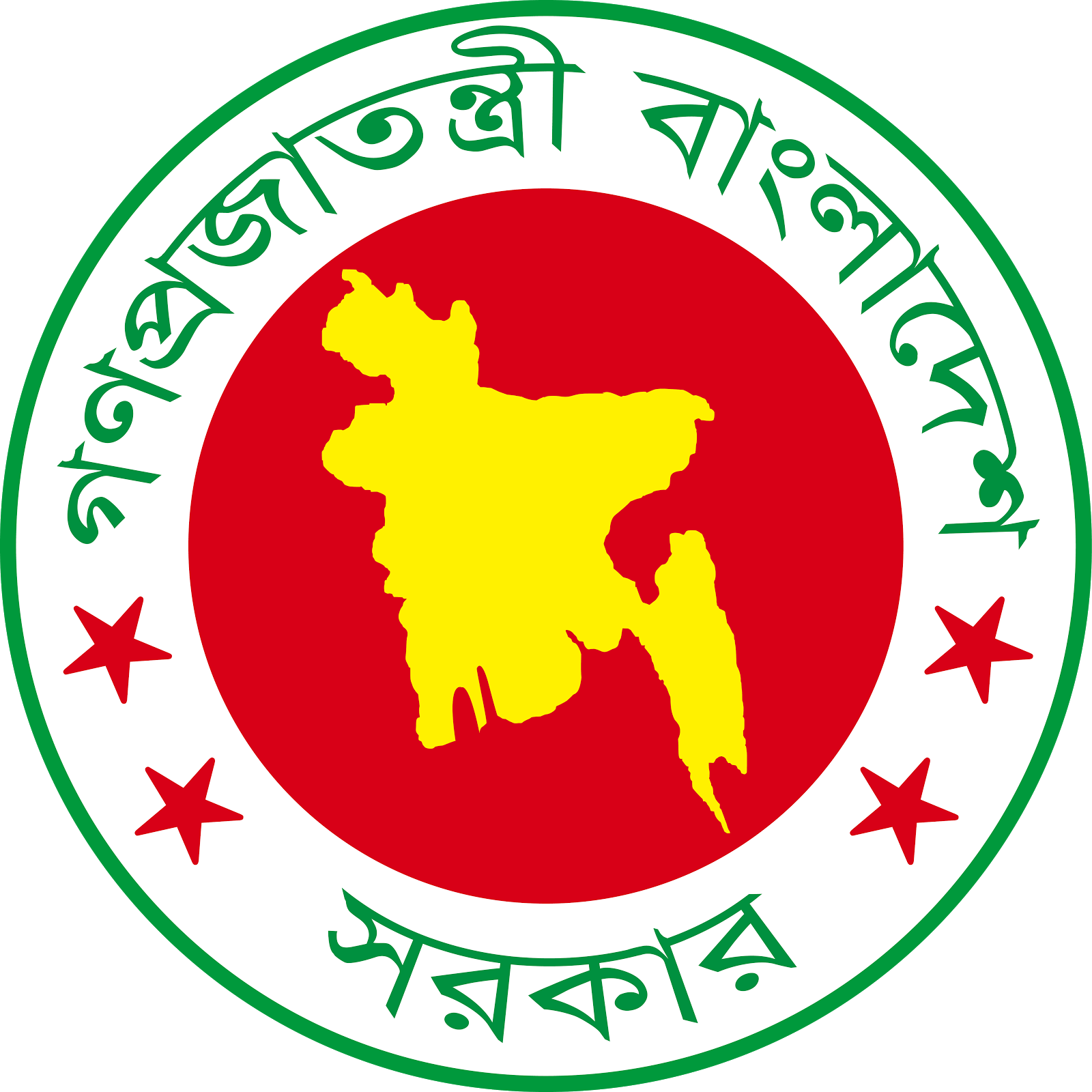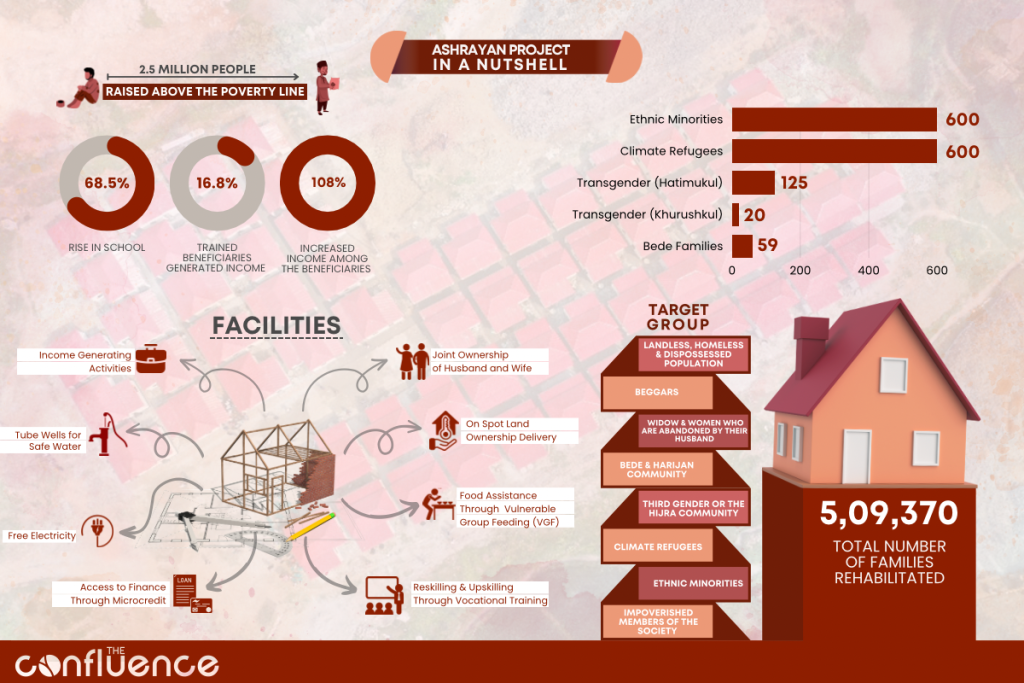
“I had to sleep in a station with mosquitoes, flies and bad odor.
Hasina arranged a house for me. I am very happy. I pray that Allah will keep
Sheikh Hasina happy,” words stated by 60-year-old Hamida Begum, a beneficiary of
the Ashrayan project in Gazipur, who had to spend numerous nights at the
Kauraid railway station in Sreepur.
Like Hamida Begum, many Bangladeshis suffer due to a lack of
affordable housing. Bangladesh is the eighth most populous country in the world
where nearly five million people are homeless and
around 124 million live in squatters, slums and mud houses. There are
broadly FIVE factors that non-exhaustively cause and/or
exacerbate the affordable housing crisis in Bangladesh.
The first factor is a fragmented housing delivery system. The
country mostly relies on the private sector to satiate the massive demand of
housing whereas the government fulfills only 7 percent of the annual housing demand.
Two reasons this overreliance on the private sector is detrimental for the low
and middle-income groups: first, the private sector mainly targets the upper
and upper-middle class population, resulting in scarcity of housing offerings
tailored for the low and middle-income class. This makes housing for the poor
virtually inaccessible. Second, the supply of housing from the private sector
is still very limited. Since the aggregate demand for housing is significantly
higher than the aggregate supply, the housing prices in Bangladesh skyrockets
which further makes the housing rental market dysfunctional.
Lack of access to finance also exacerbates this crisis. In
Bangladesh, the mortgage market caters to only the affluent class while ignoring the huge
demand for low and middle-income housing finance. Hence, the destitute segment
of the population in most cases cannot access the required finance to fulfill
their dream of home ownership.
Social and economic exclusion of many groups is another obstacle.
The International Center for Research on Women reports that women in Bangladesh
possess only 5 percent of the nation’s land while men own 95%. The archaic and
patriarchal female inheritance laws restrict
women to inherit the fair share of property from their family’s estate. Many
minority and disadvantaged groups also suffer due to their inaccessibility to
housing. The Harijan community, a sub-division of Sudra according to the Hindu
caste system and the Bede community, a nomadic tribe, cannot access a better
life in most cases due to not owning a land or home. A large segment of the
more than 50 indigenous ethnic minorities and Hijra community in Bangladesh
live uncertain, impoverished lives due to not having a roof over their
head.
Bangladesh is one of the most disaster-prone countries in the
world. The country regularly witnesses several cyclone storms annually. In
particular, floods and coastal erosion induce havoc in the low-lying coastal areas. In June 2022, Bangladesh
endured one of the worst floods in the century as over 30 lakh (3 million) people became
homeless. The climate refugees of the country are the one of the most
vulnerable groups who desperately require shelter to survive as climate change
and natural disasters play a key role in causing the housing crisis.
The COVID-19 pandemic and the Russian invasion on Ukraine caused a
global supply chain, energy, economic and food crisis which directly influenced
consumers’ purchasing power. A survey shows that at least one person in an
estimated 14.7 million households lost their job in
Bangladesh during the pandemic. A lack of job or stable income restricts
individuals to afford a place to live which exacerbates the affordable housing
crisis.
In order to solve the affordable housing crisis and construct an
inclusive development model, Prime Minister Sheikh Hasina’s Government has
undertaken a massive public housing project named “Ashrayan” (meaning
sanctuary) to ensure access to housing for the low and middle income classes.
The project non-exhaustively targets eight vulnerable groups to effectively
target the individuals who need a home the most- (1) landless, homeless &
dispossessed population, (2) beggars, (3) widow & women who are abandoned
by their husband, (4) Bede & Harijan community, (5) third gender or the
Hijra community, (6) climate refugees, (7) ethnic minorities, and (8)
impoverished members of the society.
The project was launched in 1997 during Sheikh Hasina’s first
tenure as the Prime Minister. The first Ashrayan project rehabilitated the
victims of a cyclone which hit the coastal areas of the country on 19 May 1997.
Under both Ashrayan and Ashrayan -2 projects, so far, more than 5 million
(5,09,370) families have been rehabilitated from 1997 to July 2022.
For the low and middle income segments, accessing happiness
through home ownership is becoming a reality. A third grader of Kajaldighi
Government Primary School, Jannat previously had to live in a shabby
tin-roof house built on government land with her parents. Now, a happy Jannat
expressed, “I used to see other people’s homes and dreamed of having one of
our own someday. The prime minister has fulfilled that dream. I love her very
much and will invite her to our house in Panchagarh whenever I get the chance.
I am Sheikh Hasina’s Jannat!”
The homes provided under the Ashrayan project allow the ultra-poor
to feel secure and defend themselves against the harsh elements. For the
destitute families in the country’s northwestern region, jute sacks and beds
made of hays were the only means to survive the cruel winter. Now, around 90,866 low-income families in the
northern and western regions are residents and owners of the comfortable houses
with brick walls and tin shades.
Sixty-year old Dudu Miah said, “There was no end to
suffering during the winter. Sometimes we cried, failing to manage warm clothes
for our children. We can now sleep in peace as the Ashrayan gave us a
comfortable permanent abode.”
However, only establishing homes for the low and middle-income
groups will not, in itself, ensure the beneficiaries’ integration back into the
mainstream economy and society. An entire ecosystem has to be put in place to
create livelihoods for them. Thus, the Ashrayan project provides the following facilities
to build a sustainable inclusive development model-
1. To ensure property
rights of women, ownership of land and house is given in the joint names of
husband and wife.
2. To cut the
bureaucratic red tape and empower the families to avoid any future legal
disputes over ownership, the ownership of the land is handed over to the
beneficiaries on the spot along with the registered deeds and requisite
certificates.
3. Vulnerable Group
Feeding (VGF) programme provides food assistance from the government for 3
months to make relocation easier for the families.
4. The resettled
families are given vocational and practical training to transform them into
skilled manpower so that they can engage in income generating activities to
support their families.
5. Through an inter
agency support, micro-credit is disbursed for the socio-economic development of
the rehabilitated families to increase their access to finance. Government
agencies such as Bangladesh Rural Development Board, Cooperatives, Department
of Women and Children, Department of Social Services and other social
organizations as well as NGOs are relentlessly working to include this
marginalized population into the mainstream economy under the project.
6. Each house under the
project receives free electricity.
7. To ensure access to
safe water, tube wells are being installed at the project sites.
8. Prayer houses,
graveyards, ponds, roads, and community centers are being facilitated to
integrate them back into mainstream society and bridge the social gaps.
9. Members of the
rehabilitated families are being encouraged to participate in agricultural
work.
According to a research report by the Implementation Monitoring
and Evaluation Division of the government of Bangladesh, the beneficiaries of
the project saw an increase of 108% in their income in the past six years till
2022. The report showcases that more than 25 lakh (2.5 million) beneficiaries
of Ashrayan have been uplifted out of the poverty line. As the survey notes,
16.83% of beneficiaries who have received training in agriculture, poultry,
fishers, animal husbandry, tailoring and handicrafts under the project have
been able to participate in income generating activities. In the last six
years, the school enrolment among the beneficiary families has increased by
68.5%.
Following are the major advances taken by the government under the
Ashrayan project to empower the marginalized and disadvantaged groups of
Bangladesh:
Shelter for Ethnic Minorities
As of July 2022, a total of 600 specially designed houses have
been built to uplift the ethnic minorities of three hill districts. After
receiving an abode in Pirganj under the Ashrayan project, fifty-year old Lokesh Mardi from the Mahali ethnic
community shared his sufferings during winter and storms,
“We had no piece of land of our own and our ancestors used to live
in ‘tatari ghars’ for generations, accepting the situation to be their fate.
Our parents would cover us with jute-sacks, an identical practice we followed
until days ago to protect our children.”
Restoring Dignity of the Hijra Community
The Hatikumrul Ashrayan project, executed in Ullapara upazila of
Sirajganj district has rehabilitated 20 transgenders in the five-unit barracks
constructed on 0.66 acres of land. Rupa, a member of Hijra community after
receiving her abode, said with a smile on her face,
“Before coming here, I used to live where I could not claim any
social rights. We have been regular victims of public harassment as we are the
people of the third gender. But now, we have a place to live, a place to live
happily as we wish…We do not want to beg to survive. We are raising 10 cows and
cultivating vegetables around every house. We want to show society that
transgender people can live a life of peace and prosperity if we can get some
support from society.”
The government has also implemented another scheme under the
project to rehabilitate 125 transgender families in the barracks at the Hijra
Palli near Bangibecha Bridge in Dinajpur Sadar upazila. The area named Manab Palli is especially designed for
the members of the Hijra community in Bangibecha, Dinajpur. 25 barracks, each
with 5 rooms, a verandah, 2 toilets and 1 tube well were built on around three
hectares of land under this project.
The project allocates funds for trade-based training and loans for
the Hijra community to improve their living conditions. Vocational training as
well as micro credit have been received by the beneficiaries to live a
dignified and secure life. Through a public-private partnership, sewing
machines have been arranged and a cattle firm has been established to create
income streams for them. There also have been arrangements for poultry, pigeon
rearing, and vegetable production.
Climate Refugees Rehab Project
The Khurushkul Ashrayan project has been
constructed on 253.59 acres of land in Khurushkul mouza of Sadar upazila of
Cox’s Bazar district in the financial year 2014-15. On 23 July 2020, 19
five-story buildings were handed over to 600 families impacted by major climate
events. For the first time in the history of the project, climate refugees were
given alternative free public housing from the government with all the modern
facilities and amenities.
Empowering Bede & Manta Community
A total of 59 Bede families – 31 families from
Badedihi village and 28 families from Kashipur village under Kaliganj
municipality are receiving houses in the Ashrayan’s largest Bede housing site
close to Majdia Baor at Jagannathpur village under Barabazar Union in Kaliganj.
Throughout history, the landless Manta community have spent their lives on
water in Patuakhali’s Rangabali upazila. The government has already provided
abodes to 29 of 96 Manta families. Eighty-year old Nayan Tara from the Manta
community said with gratitude, “I have been at peace for a year now after getting
home.”
Rohingya Refugees
The Myanmar military Junta displaced Rohingyas from their homeland
in Rakhine state of Myanmar. Bangladesh has so far sheltered 1 million such
Rohingyas in camps in Cox’s Bazar. However, the Cox’s Bazar area is vulnerable
to landslides and floods. Hence, to ensure safety for the Rohingyas, the
government has constructed 120 clusters, 1440 cluster sheds on 40 square
kilometers of land to rehabilitate 1 lakh Rohingyas in Bhasanchar.
Looking Ahead
Though the Ashrayan Project has made significant strides in the
aim of empowering the marginalized groups of the country, the government needs
to consider the following areas for further intervention:
1. Many houses built
under the project are vulnerable to flooding because these abodes are built on
khas lands situated in low-lying areas. The pertinent authorities need to
conduct a comprehensive feasibility study before building the abodes on any
site to prevent future vulnerabilities of the houses;
2. Khas lands located in low-lying areas require pilling, landfill
and other preparations. If the only option is to build the abodes on the
low-lying khas lands, then the government must allocate additional funds to
prepare these low-lying lands in the first place;
3. Some irregularities have been reported in constructing these
houses. It’s commendable that the government launched investigations whenever
they received any such complaint or report. However, the government has to be
more proactive in monitoring the project and punishing individuals who are
involved in irregularities and corruption;
4. An effective means testing has to be put in place to efficiently
target the individuals who actually need a shelter. The government needs to
increase inter-agency collaboration and create a local and central database in
the longer run to identify the most vulnerable;
5. In some cases, non-repair of the houses for a long time made the
houses unfit for use. It’s imperative that the government allocates adequate
funds to take care of urgent repairs etc.
 বাংলা
বাংলা


